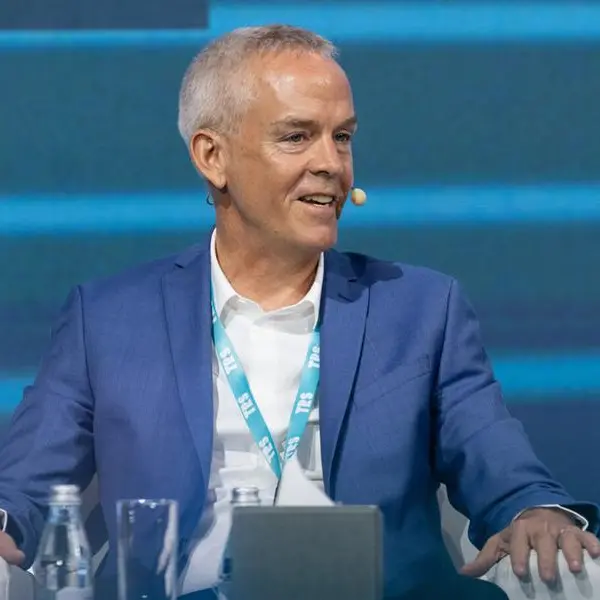In region Middle East &North East Africa, mobile data traffic is expected to grow 14 times by 2020
Around 40 percent of countries in the region have launched LTE, but the technology only accounts for around 1 percent of subscriptions, most of which are concentrated in the Gulf countries.
In the report, Gulf countries market is categorized in the "Advanced" segment due to advanced mobile technologies, innovative services and high smartphone adoption rate.
The inaugural appendix to the Ericsson (NASDAQ:ERIC) Mobility Report for the Middle East and North East Africa, reveals that, despite the market being extremely varied with regards to Information & Communications Technology (ICT) adoption and mobile penetration, the proliferation of mobile technologies continues at a rapid pace.
Mobile data traffic in the Middle East and North East Africa region is expected to grow 14 times between 2014 to 2020, while globally data will expand 9 times.
The report categorized the GCC (Gulf Corporation Council) market as one of the "Advanced" markets. These countries are characterized by advanced mobile technologies, innovative services, high data consumption and fierce competition, as well as having the highest GDP per capita across the region.
Around 40 percent of the countries in the entire region have launched LTE technology; however, it only accounts for 1 percent of global subscriptions, most of which are concentrated in Gulf countries. These countries, especially Qatar and the United Arab Emirates, have some of the highest smartphone adoption rates in the world. This segment is also more advanced in its usage of the internet across different devices.
Rafiah Ibrahim, President of Ericsson Region Middle East and East Africa Ericsson, said; "The ICT transformation has been phenomenal across the entire region. As an advanced market, the GCC is taking significant steps towards life in the Networked Society, especially with the path it's taking towards its Smart City vision, which is prominent in the UAE. Convenience and usability often determine how users perform a particular task in this region, and connectivity is now part of the mainstream. Ericsson's mobility report provides a glimpse into the future of mobility, allowing us to capture the opportunities made possible by the Networked Society, where everything that can be connected will be connected."
The region as a whole had around 680 million mobile subscriptions at the end of 2014. Between 2014 and 2020 it is forecast that mobile subscriptions will grow at a compound annual growth rate (CAGR) of 6 percent, amounting to 970 million.
The Ericsson Mobility Report shows that in 2020 the growth of technology coupled with the mobile subscriptions will create never-before-seen levels of connectivity in the region.
LTE subscriptions to triple in 2015
LTE subscriptions are on the rise and are expected to triple in 2015 alone, andsurpass 210 million by 2020, equating to around 20 percent of all mobile subscriptions.
17 percent or 125 million of all mobile subscriptions were attributed to smartphones at the end of 2014; however, as inexpensive smartphones become abundant and mobile broadband rollouts accelerate, smartphone subscriptions will increase across all the markets. Of the 970 million mobile subscriptions predicted at the end of 2020, 40 percent will come from smartphones. 
14 times growth expected in mobile data traffic by 2020
By 2020, the amount of data used monthly by each active smartphone will increase substantially from an average of 0.8GB in 2014 to approximately 5GB.
Data intensive utility, communication and entertainment services are commonly used by smartphone owners. Mobile video traffic will continue to grow driven by video streaming services and increasing prevalence of video in social media.
Download high-resolution photos and broadcast-quality video atwww.ericsson.com/press
Ericsson is the driving force behind the Networked Society - a world leader in communications technology and services. Our long-term relationships with every major telecom operator in the world allow people, business and society to fulfill their potential and create a more sustainable future.
Our services, software and infrastructure - especially in mobility, broadband and the cloud- are enabling the telecom industry and other sectors to do better business, increase efficiency, improve the user experience and capture new opportunities.
With approximately 115,000 professionals and customers in 180 countries,we combine global scale with technology and services leadership. We support networks that connect more than 2.5 billion subscribers. Forty percent of the world's mobile traffic is carried over Ericsson networks. And our investments in research and development ensure that our solutions - and our customers - stay in front.
Founded in 1876, Ericsson has its headquarters in Stockholm, Sweden. Net sales in 2014 were SEK 228.0 billion (USD 33.1 billion). Ericsson is listed on NASDAQ OMX stock exchange in Stockholm and the NASDAQ in New York.
-Ends-
www.ericsson.com
www.ericsson.com/news
www.twitter.com/ericssonpress
www.facebook.com/ericsson
www.youtube.com/ericsson
FOR FURTHER INFORMATION, PLEASE CONTACT
Ericsson External Communications, Region Middle East
E-mail: ericsson.external.communications.mea@ericsson.com
Press Release 2015










